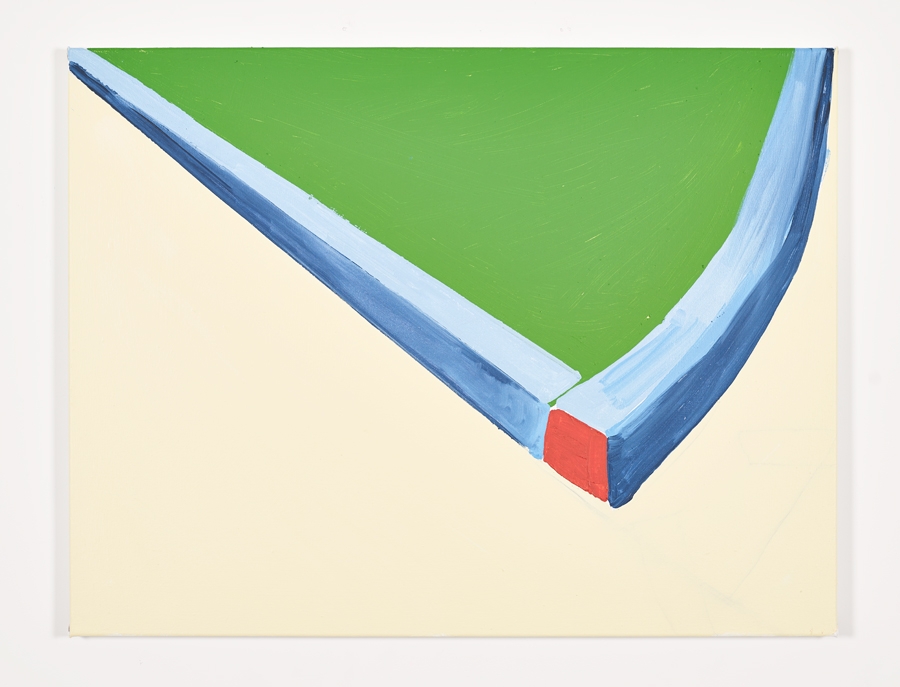If you are an artist and you happen to have success with a certain body of work, what to do? Some would keep on repeating the formula, cashing in. Others decide to take a risk and go for something different. Initially, the Belgian painter Koen van den Broek might appear to belong in the first category; on closer inspection, however, he evidently belongs in the second.
Van den Broek was only twenty-seven when he was picked up by London’s White Cube. In 2001 he had a solo exhibition there, where he presented, among others, paintings in which he rendered fragments of generic urban landscapes, like cracks in pavements and kerbstones, in a style between figuration and abstraction. These works were based on pictures the artist took during his many trips to California, sometimes also from within the perspective of a car in motion, which reinforces the already strongly present cinematographic approach of his output. The work is not only grounded in the imagery of American cinema but also in the history of abstract art, making reference to artists such as Ellsworth Kelly, Clyfford Still and Barnett Newman, but also – and first and foremost, van den Broek being European, after all – Henri Matisse.
For his previous exhibition at Greta Meert, in 2013 – part of a trilogy of shows at, elsewhere, Marlborough Contemporary in London and Friedman Benda in New York – van den Broek reinvented himself by reassembling, scanning and then superimposing these images to create new ones. Verging on pure abstraction and occupying bigger formats, the paintings were very different from those to which one had become accustomed.
With The Del, van den Broek at first sight seems to return to the work with which he broke through. Again, the artist depicts his characteristic fragments of kerbstones and pavements. This time, however, the point of departure is the so-called ‘colored curb zones’ painted on the roads and pavements in Los Angeles to indicate traffic regulations. These can be found, for example, in the area of Hotel del Coronado (aka ‘The Del’) on the Pacific coast, where Billy Wilder shot Some Like It Hot (1959), an anecdote – explaining the show’s title – that could not escape a film buff like van den Broek. This colour-coding system triggered the painter in him. As a result, he has made a beautiful series of compositions of these kerbstones with their various successions of red, blue, yellow and green, like variations on the same pictorial theme. In these, the artist leaves out as much as possible, hence creating a striking balance between figuration and abstraction. In his framing, he also often opts for bends, which lend his compositions more dynamism.
As in his previous work, van den Broek still engages in a play with shadow – in Louis Kahn (2014), for example, only a fragment of the shadow of the architect’s Salk Institute for Biological Studies building in La Jolla can be seen on a diagonal yellow kerbstone. This work, which is still a rather realistic depiction, chimes more with his earlier paintings, illustrating that, with this body of work, van den Broek has moved his familiar subject matter more in the direction of abstraction, while still not abandoning representation completely. The brushstrokes are more gestural, preceding layers of paint and stains can still be seen, while the perspective is deliberately flattened: a coherent development in a practice where representation is suggested through a play of composition, colour and form. Less, here, is clearly still more.
This article was first published in the April 2015 issue.
